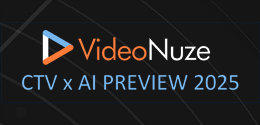-
Will The FCC Proposal To Unlock Set-Top Boxes Bring Change Or More Of The Same?
Tuesday, February 16, 2016, 12:23 PM ETPosted by:FCC Chairman Tom Wheeler is circulating a proposal that would “tear down anti-competitive barriers and pave the way for software, devices and other innovative solutions to compete with the set-top boxes that a majority of consumers must lease today.” The proposal is up for vote on February 18.
According to the FCC, the set-top box (STB) business costs consumers $20B per year. The intent of the proposal is to open the market to competition, giving consumers the option to buy STBs from third-parties, presumably at a lower price.
But we’ve seen this movie before – a few times, actually. Previous FCC mandates following similar proposals has resulted in the cable industry implementing CableCard, OpenCable (OCAP) and, most recently, Tru2Way. In all of these cases, the so-called solutions fell short in one way or another as the status quo prevailed. This begs the question: can a new FCC-mandated approach be successful or does this movie have the same old ending? Let’s take a deeper look at what the FCC actually wants to accomplish, the proposed solutions and new approaches that could make this time different.Categories: Devices, Regulation
Topics: FCC
-
Video Ad Market Predictions For 2016
Monday, December 21, 2015, 10:02 AM ETPosted by:The numbers used to analyze the video ad market can be cut in many different ways.
According to the IAB, video ad spend on desktop totalled US$2.0 billion, or 7% of digital ad spend, in the first half of 2015. The peak body also listed mobile video spend, a figure of less than US$300 million for the period, in its H1-15 Internet Advertising Revenue Report.
Yet we know more than this is being spent on digital video. The IAB’s report doesn’t capture ads sold in over-the-top (OTT) TV content, programming which can be delivered via desktops as well as a range of other connected devices. Data from The Diffusion Group in April forecasts ad revenue from OTT TV will reach US$8.4 billion in 2015, a number well below broadcast TV’s expected $60 billion haul.Categories: Advertising, Analytics, Broadcasters, Devices, Predictions, Programmatic
Topics: comScore, Nielsen, SpotX
-
The Video Landscape is a Changin'
Wednesday, December 16, 2015, 8:55 AM ETPosted by:With the escalating importance of video advertising, we’ve been carefully examining the overall video landscape and its evolution. In my conversations and early analysis, I’ve seen that at least 50% of all video inventory on the market today is served in-banner. These ads, also called display video ads, are served independently of a video player, almost exclusively without video content to follow. In other words, a pre-roll without the “roll”. No doubt you’ve seen in-banner video ads on many of your favorite sites; they come in many shapes and sizes, but they run with limited incentive for users to watch to completion.
Categories: Advertising
Topics: IAB, Integral Ad Science
-
What Are We Watching, If Not TV?
Monday, December 14, 2015, 9:02 AM ETPosted by:Reports surface every week that hail the demise of TV and highlight the shortcomings of cable networks. However, it’s important to note that these trends are merely symptoms. They are symptoms of a larger, cultural change spearheaded by the generation of yours truly—the *in James Earl Jones’ voice* millennials.
We are consuming more content than any other generation and are, as a result, reshaping digital consumption and the future of video production, as you know it. Habits are hard to break, but if an attractive alternative is presented, it becomes much easier to shift gears and form new habits. The classic Gen X habits of being a couch potato and tied down by their DVR has nearly come to an end. Don’t get me wrong, millennials still want to consume the same, if not more, content than their Gen X counterparts. We are just more inclined to want to stream it from different places/applications via two, maybe three, screens.
Let’s take a deeper look at my generation alongside the younger generation coming up behind us, and how our changing habits are transforming the broadcast and pay TV world, as we all know it.Categories: Indie Video, Millennials
Topics: Xumo
-
Niche OTT Video Could Mark The Resurgence Of Paid Content
Thursday, November 12, 2015, 8:16 AM ETPosted by:It’s no secret that the content monetization models of yore have had a tough run over the past decade. Newspaper print revenues are down 70% in that time period. The decline in home video sales is outpacing growth in digital options. CD sales dropped 30% between mid-2015 and 2013, and digital downloads fell 13% over that same span. Then there’s pay TV, which has lost nearly 900,000 net subscribers in 2015 alone.
Clearly, the Internet has fundamentally changed the way people think about paying for content. Particularly with video content, there are some big success stories. Over The Top (OTT) video services like Netflix, Hulu, and Amazon have been able to monetize shifting consumer attitudes through lucrative subscription models. As a result, the OTT video market has been on a big growth path.Categories: Commerce, Indie Video
Topics: Magid
-
What Works in Social for Mobile Video and Why All Mobile Marketers Should Care
Tuesday, November 10, 2015, 9:57 PM ETPosted by:Mobile video is currently the fastest growing digital ad category, according to eMarketer, and is expected to bypass desktop by the end of this year. While large traditional publishers are quickly reimagining themselves in mobile environments, the massive shift is actually being led by popular social media platforms.
Facebook, Twitter, YouTube, Pinterest, SnapChat and Instagram are all investing heavily in mobile video, and for good reason: mobile video ads drive more engagement and are very effective in influencing purchase intent. Marketers undoubtedly want to take advantage of that kind of ad performance, especially with consumers spending more time using mobile devices than watching TV.Categories: Advertising, Mobile Video, Social Media
Topics: Altitude Digital
-
Why CBS All Access Getting Nielsen Digital Ratings is an Indirect Challenge to Netflix
Tuesday, November 3, 2015, 9:47 PM ETPosted by:Why did companies pay more than $9 million per minute for commercial time during the last Super Bowl? The answer: they knew that tens of millions of people would be watching their ad. Advertising rates during any broadcast are tied to viewership – the more eyeballs, the more the spot is worth. Viewership is the currency that determines how much an ad is worth, and ad revenue keeps the broadcast industry running. But what happens when you want to place an ad during a show streamed online? How much is 30 streamed seconds worth to an advertiser when there is no viewer currency to trust?
Categories: Analytics, Broadcasters
Topics: CBS All Access, IneoQuest, Nielsen
-
Contextual Advertising Can Work In A Programmatic World
Wednesday, October 28, 2015, 9:09 AM ETPosted by:Sometimes the cookie just crumbles. When it comes to digital advertising, who ever said that the browser cookie has to be king? Apps do not care about cookies. And if you haven’t been paying attention recently, apps make up the vast majority of time spent with digital media in 2015.
The mobile revolution has changed how we need to think about advertising. Smartphones provide the ability to target groups of people with extraordinary degrees of accuracy and automatically deliver the most relevant content to people. Programmatic and contextual ads are the evolution of advertising.Categories: Advertising, Apps, Mobile Video, Programmatic
Topics: Beachfront Media











